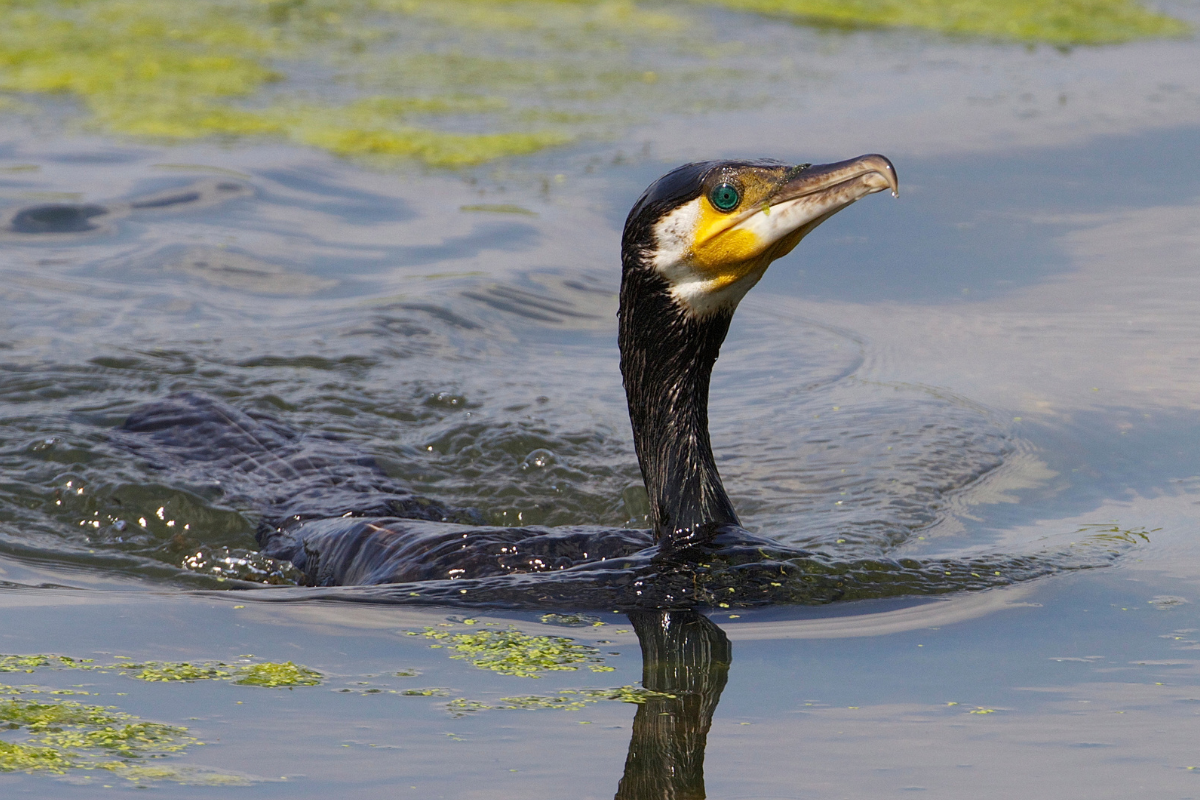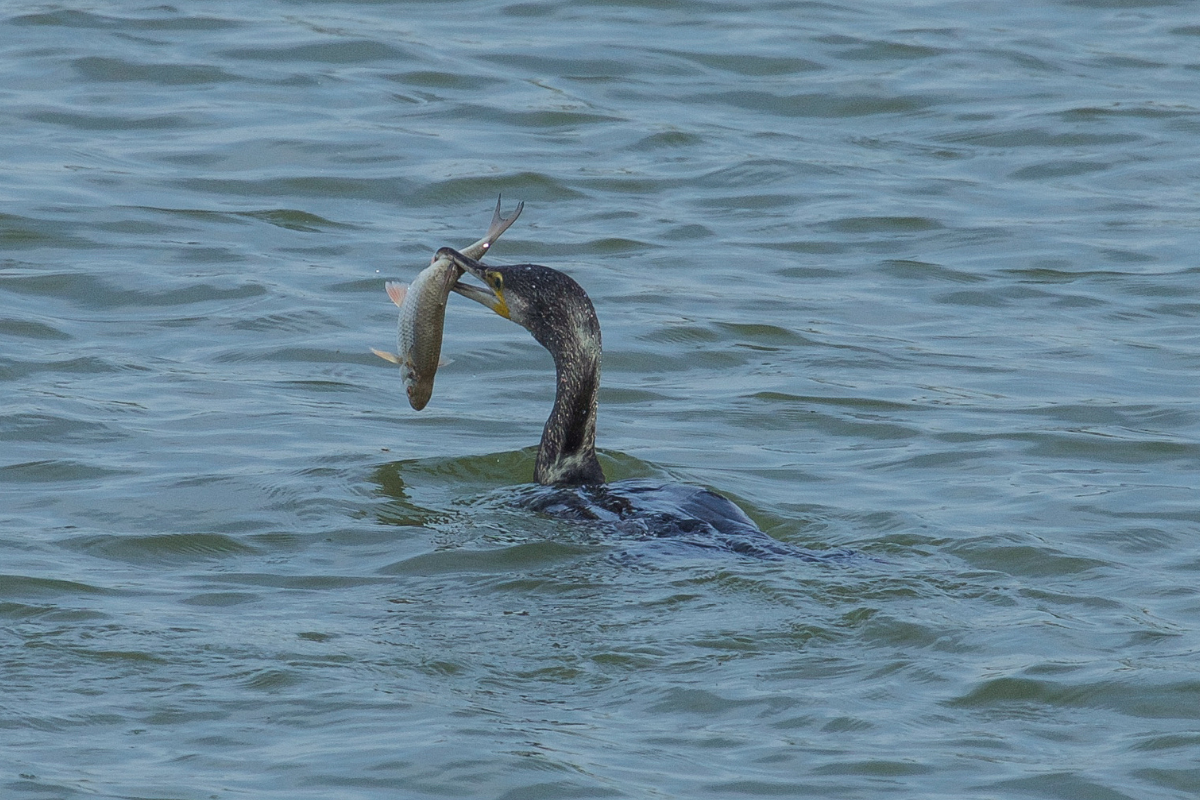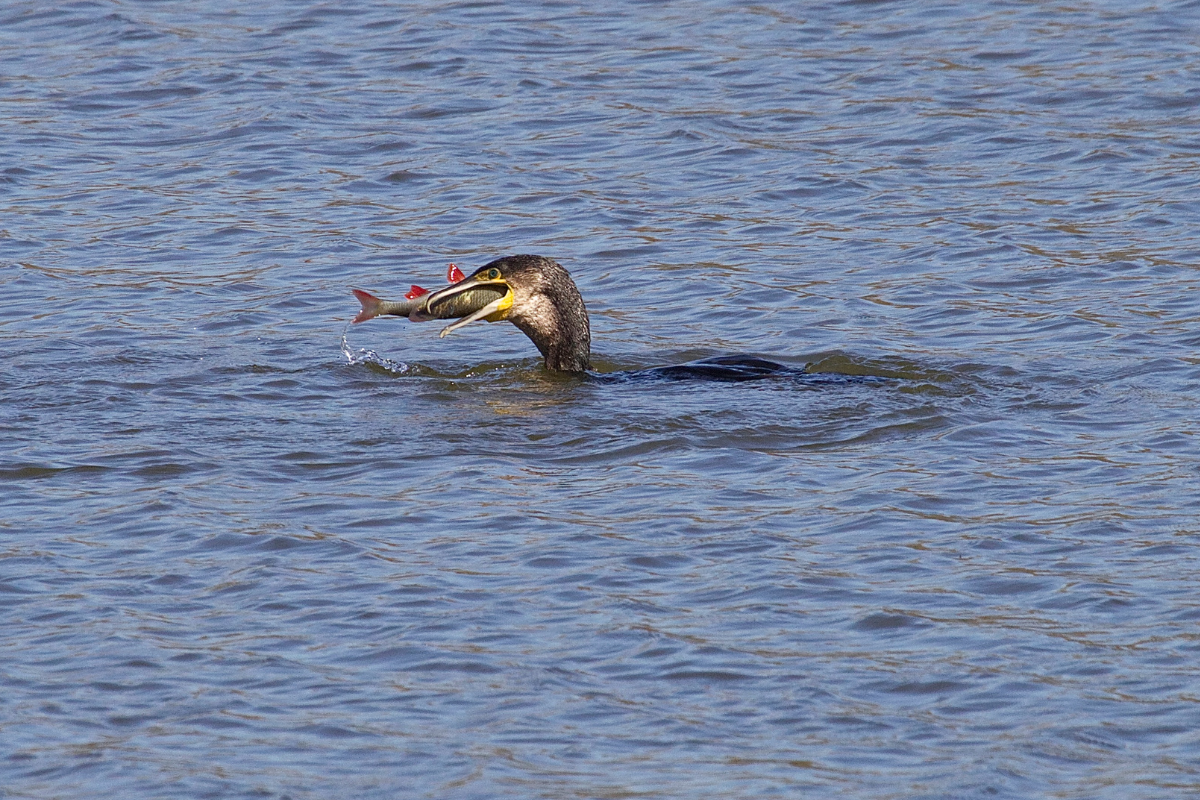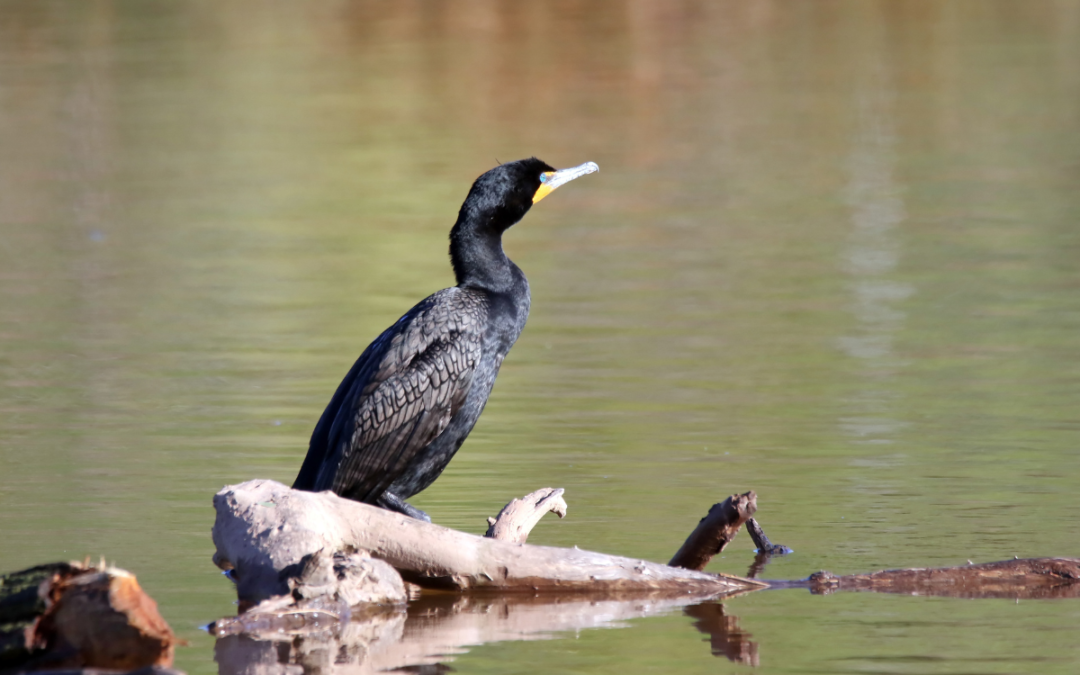Cormorants, often seen as harmless aquatic birds, can pose significant threats to farm pond ecosystems, particularly by depleting fish populations. These large, dark-feathered birds are highly skilled hunters with voracious appetites, which can lead to a noticeable decline in fish stocks, affecting both the ecological balance and the livelihood of pond owners. Understanding how cormorants feed, when they feed, and the solutions available to mitigate their impact is crucial for maintaining healthy fish populations in farm ponds.
Cormorants and Their Feeding Habits
Cormorants are adept swimmers and divers, with their long, streamlined bodies perfectly designed for pursuing prey underwater. These birds primarily feed on fish, using their sharp bills to catch and consume their prey. When it comes to hunting, cormorants can dive to impressive depths, sometimes over 20 feet, to capture fish hiding beneath the surface. Once underwater, their eyes are well-adapted to spot prey even in murky conditions, making them formidable predators in almost any aquatic environment.
Cormorants primarily hunt during daylight hours, with early morning and late afternoon being their peak feeding times. During these hours, the birds are often seen perched near water bodies or flying low over the surface, scouting for prey. Their hunting strategy involves short dives, often lasting 20-30 seconds, during which they use their webbed feet to propel themselves underwater while scanning for fish. Once a fish is caught, they quickly swallow it whole. A single cormorant can consume up to a pound of fish per day, depending on the size of the bird and the availability of prey. While this may seem like a manageable amount, the cumulative impact of a flock of cormorants can be devastating to a farm pond’s fish population.

The Impact on Fish Populations in Farm Ponds
Farm ponds are typically stocked with a variety of fish species, such as bass, catfish, bluegill, and sunfish. These species are crucial not only for recreational fishing but also for maintaining the pond’s ecological balance. Cormorants, however, are opportunistic feeders and will prey on any fish that is available and easy to catch, often targeting smaller or juvenile fish, which can disrupt the natural growth and reproduction cycles within the pond.
In addition to targeting juvenile fish, cormorants can stress adult fish populations by forcing them to expend energy avoiding predation. This can lead to reduced growth rates and reproductive success, further diminishing the fish population over time. For farm ponds where fish are stocked for commercial purposes or for recreational fishing, this decline can have financial repercussions, as restocking efforts become more frequent and costly.
Moreover, cormorants often feed in groups, exacerbating the issue. A flock of just a few dozen birds can quickly decimate a fish population, especially in smaller ponds where fish have fewer places to hide or escape predation. Given their efficiency as hunters and their ability to return to the same feeding grounds repeatedly, cormorants can have a profound and long-lasting impact on a pond’s fishery.

Mitigating Cormorant Predation: Solutions for Farm Ponds
Dealing with cormorant predation requires a multi-faceted approach. While it’s challenging to completely prevent cormorants from targeting a farm pond, there are several effective strategies to reduce their impact and protect fish populations.
1. Artificial Habitats for Fish Protection
One of the most effective solutions is to create artificial habitats within the pond where fish can seek refuge from predators like cormorants. Submerged structures such as brush piles, PVC pipe cribs, or rock piles can provide cover for smaller fish, allowing them to hide and evade cormorants. These structures mimic natural habitats that fish would typically use for protection and can help reduce predation pressure.
Installing these artificial habitats in deeper sections of the pond can be particularly effective, as cormorants prefer to hunt in shallow water where prey is easier to catch. By encouraging fish to congregate in areas with more cover, pond owners can significantly reduce the number of fish lost to cormorants.
2. Visual Deterrents
Another common method for deterring cormorants is the use of visual deterrents. Items like reflective tape, scarecrows, or predator decoys (such as fake owls or eagles) can help to scare cormorants away from the pond. However, these methods are often only temporarily effective, as cormorants can become habituated to them over time. To maintain their effectiveness, it’s important to move or change the deterrents regularly, preventing the birds from becoming accustomed to them.
3. Netting or Overhead Wires
For smaller ponds, the installation of overhead wires or netting can physically prevent cormorants from accessing the water. This solution is particularly effective but can be costly and aesthetically unappealing for larger bodies of water. Nonetheless, it offers a long-term, low-maintenance solution to the problem of cormorant predation. By creating a barrier above the pond, it prevents the birds from diving or landing, thus protecting the fish population below.
4. Regulated Cormorant Control
In some regions, cormorants are protected under various wildlife conservation laws, which limit the ability to manage their populations through lethal means. However, in areas where cormorants have become a significant problem, it may be possible to obtain permits to control their numbers through regulated hunting or trapping. This option should always be explored in compliance with local wildlife regulations and conservation efforts to ensure the ecological balance is maintained.

Let Up Help with Your Pond!
Cormorants are skilled and persistent hunters that can significantly deplete fish populations in farm ponds, particularly when they feed in large numbers. Their ability to dive deep and prey on a wide variety of fish species makes them a serious concern for pond owners who rely on healthy fish stocks for commercial or recreational purposes.
Fortunately, there are several strategies available to mitigate their impact. By creating artificial habitats for fish, employing visual deterrents, installing overhead wires or netting, and exploring regulated control options, pond owners can protect their fish populations and maintain the ecological health of their ponds. Implementing a combination of these methods can help strike a balance between preserving wildlife and safeguarding the livelihood and enjoyment of farm pond owners.
If you’re in the south GA or north FL region and need help managing avian predators in your pond, complete this form and we’ll contact you to schedule a time to meet.

